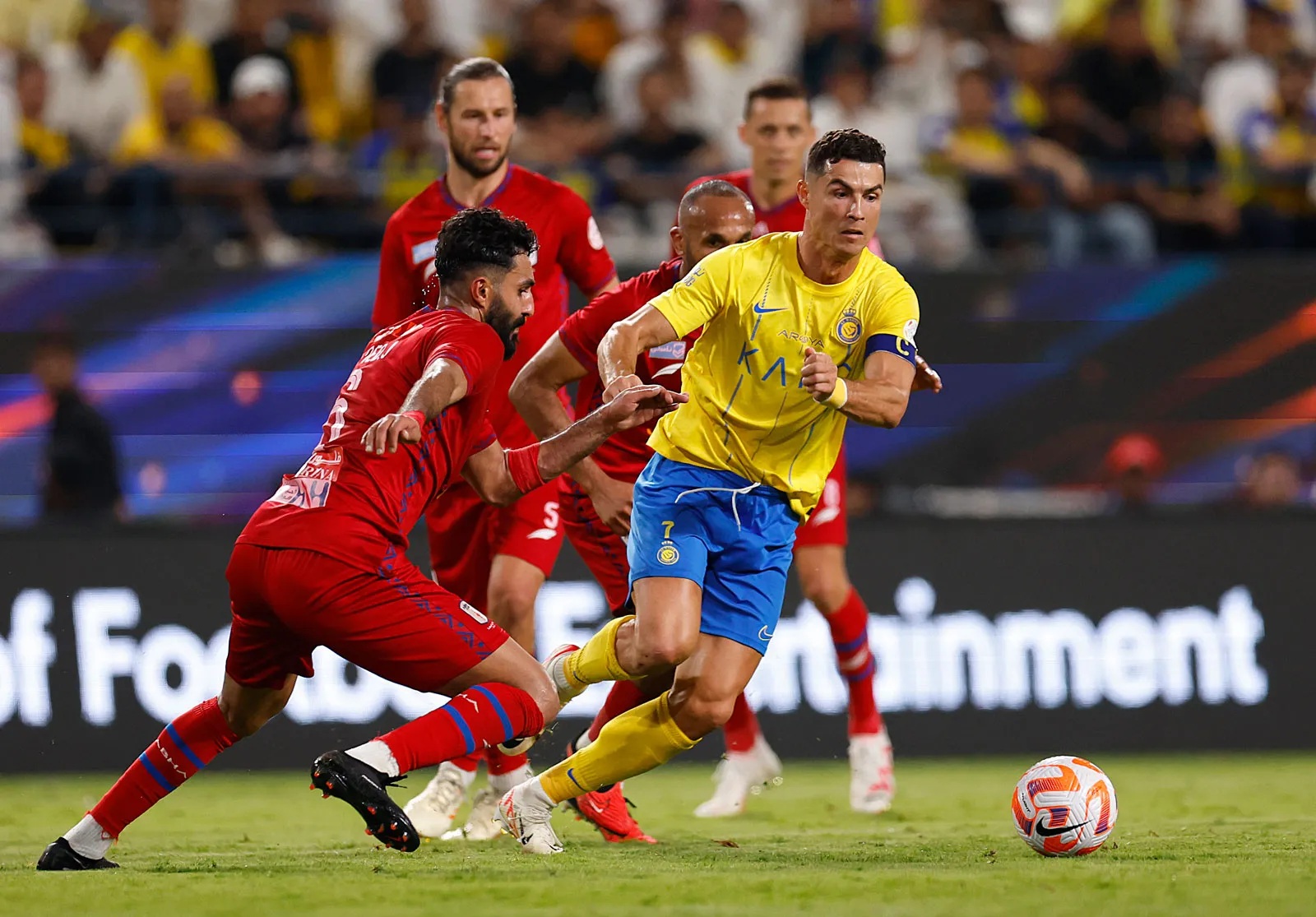The Lure of Fame: Ronaldo’s Global Impact
In the world of soccer, few names resonate as powerfully as Cristiano Ronaldo. His journey from the streets of Madeira to the grandest stages of global football is a testament to talent, perseverance, and an unyielding drive for excellence. Ronaldo’s move to Al Nassr has not only shifted the spotlight onto the Saudi Arabian club but has also sparked a broader conversation about the evolving dynamics of the sport. His presence is a magnet, drawing attention from every corner of the globe, and in doing so, he transforms the ordinary into the extraordinary.
Ronaldo’s impact transcends the boundaries of the pitch. He is a brand, a phenomenon that commands attention and respect. His social media following alone is a testament to his influence, with millions hanging on his every post, every word. This global reach is not just about numbers; it’s about the ability to inspire, to connect with fans across cultures and continents. In joining Al Nassr, Ronaldo has not only brought his skills but also his unparalleled ability to captivate and engage a worldwide audience.
Yet, the allure of fame is a double-edged sword. While it brings visibility and prestige, it also raises questions about the motivations behind such a move. Is it purely about the love of the game, or is there a deeper, more strategic play at work? Ronaldo’s decision to join Al Nassr is a reflection of the complex interplay between personal ambition and the broader forces shaping modern soccer. It challenges us to consider what truly drives the decisions of the world’s most celebrated athletes.
Al Nassr’s Rise: A New Chapter in Soccer
Al Nassr’s ascent in the world of soccer is a story of ambition and transformation. Historically, the club has been a dominant force in Saudi Arabian football, but Ronaldo’s arrival marks a new chapter, one that positions Al Nassr on the global stage. This move is not just about acquiring a star player; it’s about redefining the club’s identity and aspirations. With Ronaldo, Al Nassr is no longer just a local powerhouse; it is a contender in the international arena.
The ripple effects of Ronaldo’s presence are felt far beyond the confines of the stadium. It is a catalyst for change, inspiring a new generation of players and fans. The excitement surrounding his games is palpable, drawing crowds and media attention like never before. This newfound visibility is a boon for Al Nassr, opening doors to partnerships, sponsorships, and opportunities that were previously out of reach. It is a testament to the power of a single individual to elevate an entire organization.
However, with great opportunity comes great responsibility. Al Nassr’s challenge is to harness this momentum and build a sustainable future. The club must balance the immediate benefits of Ronaldo’s presence with the long-term vision of growth and development. This requires strategic planning, investment in youth programs, and a commitment to nurturing local talent. In doing so, Al Nassr can ensure that this new chapter is not just a fleeting moment of glory but a lasting legacy in the world of soccer.
Money Talks: The Economics Behind the Move
At the heart of Ronaldo’s move to Al Nassr lies a complex web of economic considerations. Soccer, like any other industry, is driven by financial imperatives, and the transfer of a player of Ronaldo’s caliber is a significant investment. The financial package offered by Al Nassr is reportedly one of the most lucrative in the history of the sport, reflecting the club’s commitment to securing top talent and enhancing its competitive edge.
But the economics of this move extend beyond the immediate financial outlay. Ronaldo’s presence is a strategic asset, one that can generate substantial returns for Al Nassr. From increased ticket sales and merchandise revenue to enhanced media rights and sponsorship deals, the potential for financial gain is immense. This is a calculated gamble, one that hinges on Ronaldo’s ability to deliver both on and off the field.
Yet, the question remains: is this a sustainable model for success? The influx of money into soccer has transformed the landscape, raising concerns about the commercialization of the sport. As clubs vie for the biggest names and the largest contracts, there is a risk of losing sight of the essence of the game. Ronaldo’s move to Al Nassr is a microcosm of this broader trend, prompting us to reflect on the balance between financial ambition and the integrity of the sport.
Beyond the Pitch: Legacy or Lucre?
As Ronaldo dons the Al Nassr jersey, the question of legacy looms large. For an athlete of his stature, every move is scrutinized, every decision weighed against the backdrop of an illustrious career. Is this chapter in Saudi Arabia a pursuit of legacy, a chance to leave an indelible mark on a new frontier, or is it a final flourish in the pursuit of financial gain? The answer is likely a blend of both, reflecting the multifaceted nature of modern sports.
Legacy is a powerful motivator, one that transcends the immediate rewards of fame and fortune. For Ronaldo, the opportunity to inspire a new generation, to elevate the profile of soccer in a burgeoning market, is a compelling narrative. It is a chance to be a pioneer, to shape the future of the sport in a region with untapped potential. This is the allure of legacy, the promise of something enduring and meaningful.
Yet, the pursuit of lucre cannot be ignored. In a world where financial success is often equated with achievement, the economic incentives of Ronaldo’s move are undeniable. This is the reality of professional sports, where the lines between passion and profit are increasingly blurred. As we reflect on Ronaldo’s journey with Al Nassr, we are reminded of the delicate balance between legacy and lucre, and the enduring question of what truly defines success in the world of soccer.








